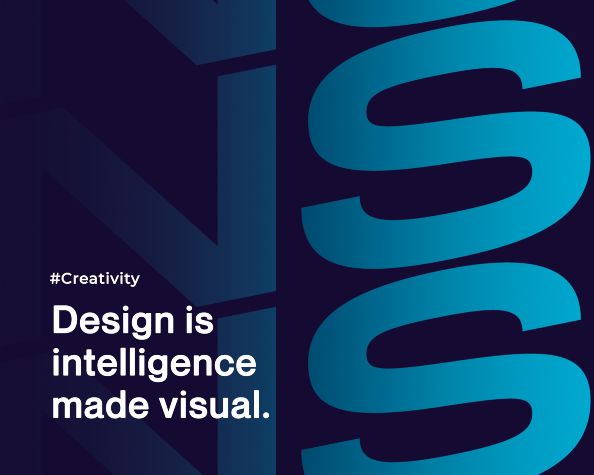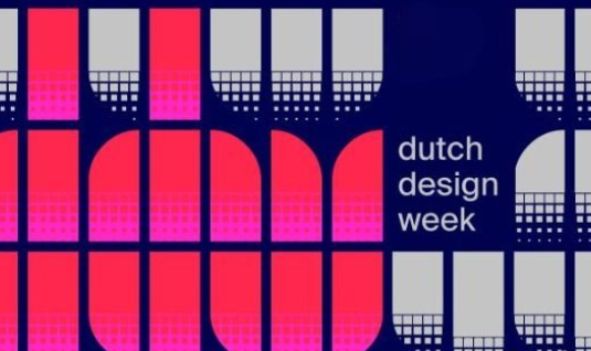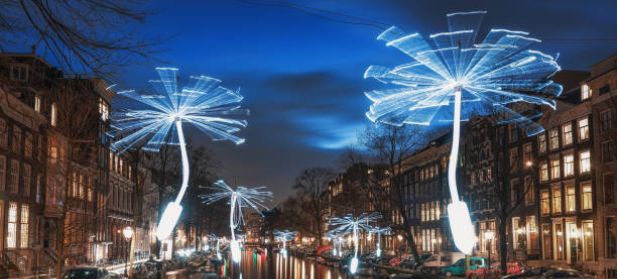
Top Culturele Evenementen over Social Design
In een wereld die steeds complexer en onderling verbonden wordt, is de rol van design in het aanpakken van maatschappelijke uitdagingen belangrijker dan ooit. Culturele evenementen die zich richten op social design spelen een cruciale rol in het bevorderen van bewustzijn, innovatie en maatschappelijke betrokkenheid. Deze evenementen bieden een platform voor ontwerpers, architecten, kunstenaars en denkers om ideeën uit te wisselen, samenwerkingen aan te gaan en oplossingen te ontwikkelen voor de meest dringende problemen van onze tijd.

Internationale Architectuur Biënnale Rotterdam (IABR)
Website: iabr.nl
De Internationale Architectuur Biënnale Rotterdam (IABR) is uitgegroeid tot een toonaangevend internationaal platform voor actuele ontwikkelingen in de architectuur en stedenbouw. De biënnale brengt professionals, beleidsmakers en het publiek samen om te discussiëren over de toekomst van onze steden en de rol van architectuur in het vormgeven van een duurzame en inclusieve samenleving.
Missie en Visie
De IABR streeft ernaar om via architectuur, landschapsontwerp en ruimtelijke ordening bij te dragen aan een gezond en rechtvaardig ecosysteem. Door middel van tentoonstellingen, debatten, lezingen en ontwerpend onderzoek wil de biënnale de verbeeldingskracht van architectuur vieren en tegelijkertijd de uitdagingen van een veranderend klimaat en groeiende ongelijkheid aanpakken.
Recente edities en thema’s van IABR:
| Editie | Jaar | Thema |
|---|---|---|
| 10e | 2022 | It’s About Time |
| 9e | 2020-2021 | Down to Earth |
| 8e | 2018 | The Missing Link |
| 7e | 2016 | The Next Economy |
Deelnemers en Projecten
De IABR trekt gerenommeerde architecten, stedenbouwkundigen en onderzoekers van over de hele wereld aan. Projecten die uit de biënnale voortkomen, variëren van speculatieve ontwerpen tot gerealiseerde interventies in de stedelijke ruimte. Door het tonen van best practices en innovatieve benaderingen, inspireert de IABR professionals en het bredere publiek om na te denken over de rol van ontwerp in het creëren van leefbare, veerkrachtige steden.

Dutch Design Week (DDW)
Website: ddw.nl
Dutch Design Week (DDW) is het grootste designevenement in Noord-Europa, dat jaarlijks plaatsvindt in Eindhoven. Gedurende negen dagen presenteren meer dan 2600 ontwerpers hun werk en concepten aan een internationaal publiek. DDW biedt een podium voor experiment, vernieuwing en cross-overs, met speciale aandacht voor jong talent.
Missie en Kernwaarden
DDW zet design in als een kracht voor positieve verandering. Door het tonen van innovatieve ontwerpen en het faciliteren van dialoog, wil het evenement bijdragen aan het vormgeven van een betere toekomst. DDW viert de creativiteit, vindingrijkheid en het probleemoplossend vermogen van Nederlandse ontwerpers en versterkt hun internationale positie.
Programma en Innovaties
Tijdens DDW komen alle aspecten van design aan bod, van productontwerp en technologie tot mode en sociale innovatie. Het programma omvat tentoonstellingen, lezingen, workshops, netwerkevenementen en prijsuitreikingen. Bezoekers kunnen kennismaken met baanbrekende concepten en prototypes die de grenzen van design verleggen en oplossingen bieden voor maatschappelijke uitdagingen.
DDW in cijfers:
| Jaar | Bezoekers | Deelnemende ontwerpers | Locaties |
|---|---|---|---|
| 2022 | 350.000 | 2.600 | 120 |
| 2021 | 200.000 | 1.800 | 100 |
| 2020 | Online | 1.500 | Online |
Amsterdam Light Festival
Website: amsterdamlightfestival.com
Amsterdam Light Festival is een jaarlijks terugkerend evenement dat de donkere wintermaanden in Amsterdam verlicht met indrukwekkende lichtkunstwerken. Kunstenaars uit binnen- en buitenland worden uitgenodigd om site-specifieke installaties te creëren die de stad op een nieuwe manier doen oplichten en de openbare ruimte transformeren.
Doelstellingen en Ambities
Het festival streeft ernaar om met lichtkunst mensen te verbinden, te inspireren en aan het denken te zetten over actuele maatschappelijke thema’s. Door het toegankelijk maken van kunst in de publieke ruimte, wil Amsterdam Light Festival bijdragen aan een inclusieve en levendige stad. Het festival ambieert om een internationaal toonaangevend platform te zijn voor innovatie en experiment binnen de lichtkunst discipline.

Recente edities en thema’s van Amsterdam Light Festival:
| Editie | Jaar | Thema |
|---|---|---|
| 11e | 2022-2023 | Imagine Beyond |
| 10e | 2021-2022 | Celebrate Light |
| 9e | 2020-2021 | When Nature Calls |
| 8e | 2019-2020 | DISRUPT! |
Duurzaamheid en Innovatie
Amsterdam Light Festival zet zich in voor duurzaamheid en streeft ernaar om de ecologische voetafdruk van het evenement te minimaliseren. Er wordt gebruik gemaakt van energiezuinige LED-verlichting, groene stroom en herbruikbare materialen. Daarnaast stimuleert het festival innovatie binnen de lichtkunst door het bieden van een platform voor experimentele en interactieve projecten die de grenzen van technologie en creativiteit verleggen.
Utrecht Manifest (afgelopen)
Utrecht Manifest was een tweejaarlijkse biënnale voor social design die van 2005 tot 2011 plaatsvond in Utrecht. Het evenement had een multidisciplinair karakter en onderscheidde zich door een continue agenda, waarbij elke editie voortbouwde op de resultaten en inzichten van de voorgaande edities. Hiermee ontwikkelde Utrecht Manifest zich tot een duurzaam platform voor onderzoek en kennisontwikkeling op het gebied van sociaal geëngageerde vormgeving. Utrecht Manifest werkte nauw samen met verschillende Utrechtse instellingen, waaronder Studium Generale Utrecht, een organisatie die lezingen en debatten organiseert over actuele maatschappelijke thema’s.
Edities en thema’s van Utrecht Manifest:
| Editie | Jaar | Thema |
|---|---|---|
| 4e | 2011 | Het Nieuwe Werklandschap, positionering van design in sociaaleconomische verandering |
| 3e | 2009 | Historisch, utopisch en activistisch perspectief op social design |
| 2e | 2007 | Social design, duurzaamheid en maatschappelijke betekenis van hedendaagse vormgeving |
| 1e | 2005 | Ouverture, verkenning van actuele thematieken in de vormgeving |
Hoogtepunten en Projecten
Door de jaren heen heeft Utrecht Manifest tal van spraakmakende projecten en samenwerkingen geïnitieerd. Zo organiseerde Studium Generale Utrecht in het kader van Utrecht Manifest debatten over de creatieve stad en de rol van social design in de samenleving.
Een ander opmerkelijk project was de samenwerking met lokale designstudio’s en -initiatieven zoals Utrecht Design, om de zichtbaarheid van design in Utrecht te vergroten en de kracht van ontwerp voor maatschappelijke vraagstukken te benadrukken.
Tijdens de vierde editie in 2011, die in het teken stond van ‘Het Nieuwe Werklandschap’, werd onder meer gekeken naar de herontwikkeling van het voormalige busstation Transferium Westraven. Utrecht Manifest nodigde ontwerpers en stedenbouwkundigen uit om na te denken over hoe deze locatie kon worden getransformeerd tot een levendige en inclusieve openbare ruimte.
Daarnaast werkte Utrecht Manifest samen met organisaties als Het Gilde Utrecht om de waarde van traditionele ambachten in een moderne context te onderzoeken, door middel van workshops en demonstraties.
Van onderzoek naar de ontwikkelingsmogelijkheden van de Utrechtse wijk Hoograven tot het verkennen van de toekomst van werk in de stad, de biënnale bracht ontwerpers, bewoners, beleidsmakers en andere stakeholders samen om te werken aan een meer inclusieve en duurzame samenleving.
Samenvatting en Vooruitblik
De culturele evenementen die in dit artikel zijn besproken – IABR, DDW, Amsterdam Light Festival en Utrecht Manifest – hebben elk op hun eigen wijze bijgedragen aan het versterken van de rol van design in het aanpakken van maatschappelijke uitdagingen. Door het bieden van een platform voor innovatie, experiment en dialoog, hebben deze evenementen de grenzen van wat mogelijk is met design verlegd en de weg vrijgemaakt voor een meer sociaal geëngageerde en duurzame ontwerppraktijk.
In een tijd waarin we worden geconfronteerd met ongekende uitdagingen op het gebied van klimaat, sociale gelijkheid en technologische verandering, is de rol van culturele evenementen die zich richten op social design belangrijker dan ooit. Door ontwerpers, kunstenaars, denkers en het bredere publiek samen te brengen, creëren deze evenementen een ruimte voor reflectie, inspiratie en actie. Ze herinneren ons eraan dat design niet alleen gaat over het creëren van mooie objecten, maar ook over het vormgeven van een betere wereld voor iedereen.
Belangrijk om te vermelden is dat wij als auteurs en platform deze evenementen bespreken en onder de aandacht brengen, maar niet zelf organiseren. Voor de meest actuele en volledige informatie over deze evenementen, inclusief data, programma’s, tickets en meer, verwijzen wij naar de officiële websites van de respectievelijke organisaties. Daar vindt u alle details die u nodig heeft om deel te nemen aan of bij te dragen aan deze inspirerende initiatieven die de kracht van ontwerp inzetten voor een betere wereld.
